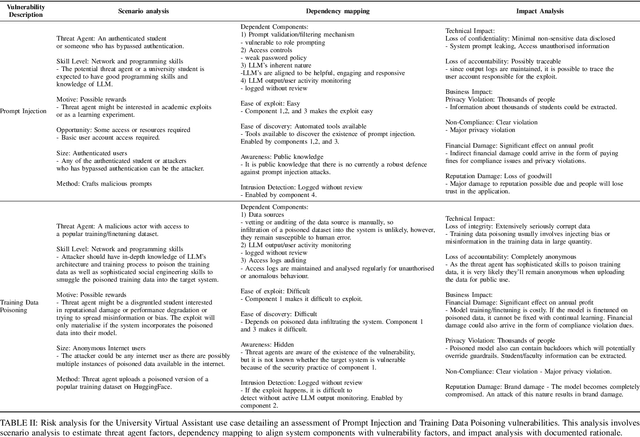Rahul Pankajakshan
Are You Human? An Adversarial Benchmark to Expose LLMs
Oct 12, 2024Abstract:Large Language Models (LLMs) have demonstrated an alarming ability to impersonate humans in conversation, raising concerns about their potential misuse in scams and deception. Humans have a right to know if they are conversing to an LLM. We evaluate text-based prompts designed as challenges to expose LLM imposters in real-time. To this end we compile and release an open-source benchmark dataset that includes 'implicit challenges' that exploit an LLM's instruction-following mechanism to cause role deviation, and 'exlicit challenges' that test an LLM's ability to perform simple tasks typically easy for humans but difficult for LLMs. Our evaluation of 9 leading models from the LMSYS leaderboard revealed that explicit challenges successfully detected LLMs in 78.4% of cases, while implicit challenges were effective in 22.9% of instances. User studies validate the real-world applicability of our methods, with humans outperforming LLMs on explicit challenges (78% vs 22% success rate). Our framework unexpectedly revealed that many study participants were using LLMs to complete tasks, demonstrating its effectiveness in detecting both AI impostors and human misuse of AI tools. This work addresses the critical need for reliable, real-time LLM detection methods in high-stakes conversations.
Mapping LLM Security Landscapes: A Comprehensive Stakeholder Risk Assessment Proposal
Mar 20, 2024



Abstract:The rapid integration of Large Language Models (LLMs) across diverse sectors has marked a transformative era, showcasing remarkable capabilities in text generation and problem-solving tasks. However, this technological advancement is accompanied by significant risks and vulnerabilities. Despite ongoing security enhancements, attackers persistently exploit these weaknesses, casting doubts on the overall trustworthiness of LLMs. Compounding the issue, organisations are deploying LLM-integrated systems without understanding the severity of potential consequences. Existing studies by OWASP and MITRE offer a general overview of threats and vulnerabilities but lack a method for directly and succinctly analysing the risks for security practitioners, developers, and key decision-makers who are working with this novel technology. To address this gap, we propose a risk assessment process using tools like the OWASP risk rating methodology which is used for traditional systems. We conduct scenario analysis to identify potential threat agents and map the dependent system components against vulnerability factors. Through this analysis, we assess the likelihood of a cyberattack. Subsequently, we conduct a thorough impact analysis to derive a comprehensive threat matrix. We also map threats against three key stakeholder groups: developers engaged in model fine-tuning, application developers utilizing third-party APIs, and end users. The proposed threat matrix provides a holistic evaluation of LLM-related risks, enabling stakeholders to make informed decisions for effective mitigation strategies. Our outlined process serves as an actionable and comprehensive tool for security practitioners, offering insights for resource management and enhancing the overall system security.
 Add to Chrome
Add to Chrome Add to Firefox
Add to Firefox Add to Edge
Add to Edge